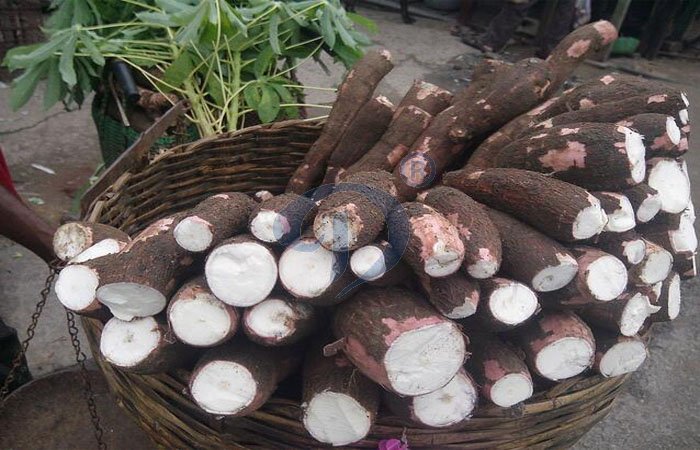How to making garri from cassava ?

Fresh cassava
Garri is traditionally made at home in Africa. It is increasingly becoming common to produce Garri in commercial quantities using mechanized means.
Garri is made from cassava, the tubers are harvested and peeled, removing the covering. The white pulp is grated in a garri grinding machine. Before the advent of machines, the cassava is hand grated. The grated produce is then put into a jute sack and the sack tied. Traditionally, this is left to ferment for three to seven days depending on the type of garri being made. This step is very important, as the fermentation process helps to reduce and detoxify the high cyanide content of cassava.
The garri filled sacks are stacked up on each other, and a wooden board placed below and above the sacks. The wooden boards are tied together with the sacks full of the grated cassava in between. Tension is created by tightening the rope and thus allowing water to run out of the grated cassava being processed.
Usually, by day three, the grated cassava would have lost quite some water and become reasonably dried. This step is also been by-passed with the use of machines that compress and squeeze water out of the grated cassava.




